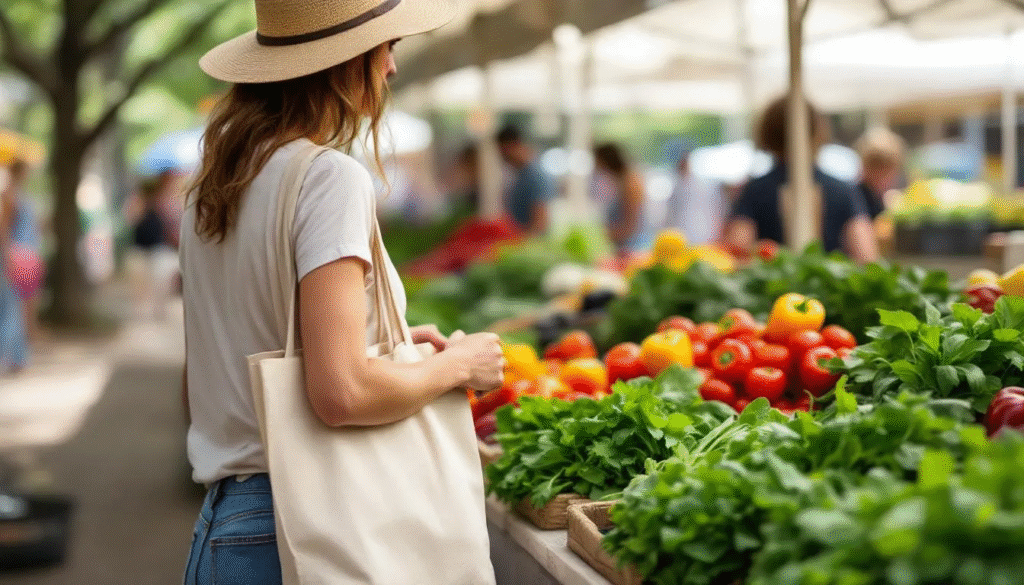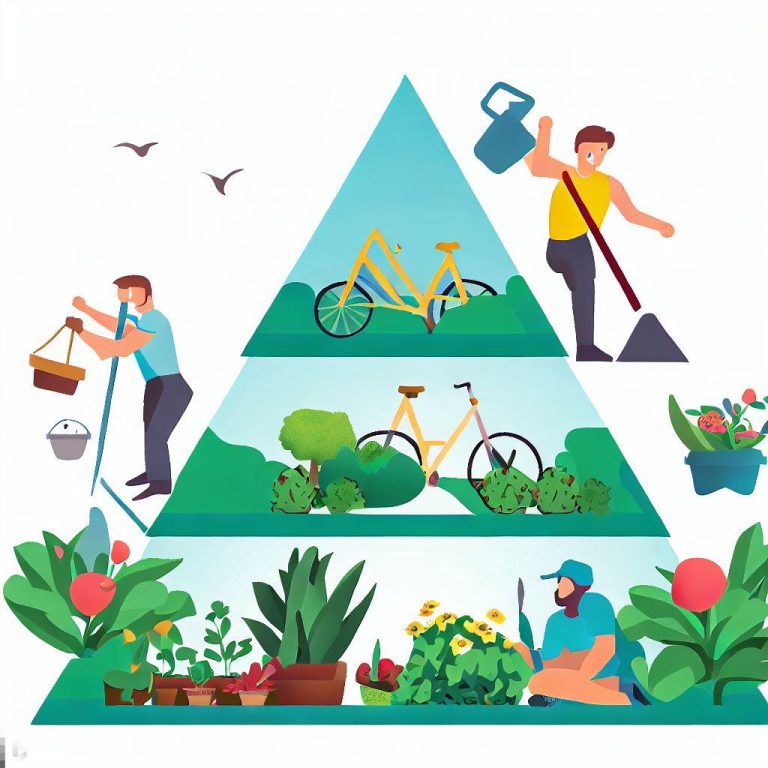Embracing a Naturalistic Lifestyle: Your Complete Guide to Living in Harmony with Nature
Start your naturalistic lifestyle with these practical tips, cost-savvy swaps, and habit strategies to live in harmony with nature.
Natural living isn’t about ditching Wi‑Fi and moving to a cabin (unless you’ve already named your chickens). It’s about tiny, doable shifts that fit real life—so you feel better, spend smarter, and tread lighter. I’m sharing what actually worked for me (and what flopped), the research that ended my eye‑roll phase, and the small habits that stuck even on “popcorn-for-dinner” weeks.
Understanding What a Naturalistic Lifestyle Really Means
What “natural” really means (no, you don’t need to churn butter):
- It’s not grinding flour at dawn or weaving hemp by candlelight. It’s choosing simpler, closer-to-nature options most of the time.
- Think whole foods over ultra‑processed, plant‑based cleaners instead of chemical cocktails, and fewer synthetic fragrances and additives.
- It’s also about daily rhythms—more morning light, regular movement, honest rest—letting your body run the way it’s designed.
Bottom line: Natural living isn’t a personality makeover; it’s a practical nudge toward harmony with nature that you can actually keep up with when life is loud and messy.
Four pillars keep this natural living simple and sane:
- Sustainability: choices that reduce waste and value longevity
- Mindful consumption: buying less, choosing better
- Chemical reduction: minimizing unnecessary exposure in food and home
- Environmental harmony: aligning daily life with natural systems
Quick reality check: marketing has hijacked the word “natural.” I once bought a “natural” face wash that read like a lab manual—synthetics galore with a $28 price tag. The lesson? Read labels, not buzzwords. Look for short, recognizable ingredient lists and third-party certifications (EWG Verified, Made Safe, USDA Organic where relevant). It’s not about perfection—it’s about informed choices that actually work for your life.
How It Differs from Minimalism or Veganism
- Minimalism is about owning less; veganism is about plant-based eating. A naturalistic lifestyle is more holistic—it touches food, home, air quality, light exposure, even how often you step outside to remind yourself the sky still exists.
Benefits of a Naturalistic Lifestyle
I didn’t buy into this because it sounded fun. I got curious after a friend’s eczema cleared and her energy soared. Then I looked at the science.
- Two hours in nature per week is a sweet spot: A large UK study of 19,000+ people found that spending about 120 minutes weekly in nature is linked with higher self-reported health and well-being (White et al., Scientific Reports, 2019). It doesn’t need to be all at once; little daily walks count.
- Indoor air matters—more than you think: The EPA reports indoor air can be 2–5x more polluted than outdoor air due to off-gassing and product use. That’s… not ideal.
- Plant power (with context): NASA’s classic chamber studies (Wolverton et al.) showed certain plants can remove VOCs in sealed environments. In real homes, plants contribute modestly to better air—best paired with ventilation and source control.
- Habit formation isn’t instant: A study in the European Journal of Social Psychology (Lally et al., 2009) found it takes a median of 66 days to form a new habit, with a wide range depending on complexity. Translation: give yourself a runway.
I also appreciate practical health shifts people actually notice: fewer headaches after ditching synthetic fragrances, better sleep with evening light hygiene and whole-food meals, and calmer energy when you’re not “cleaning” with something that could double as paint stripper.
Foundation Steps for Starting A Natural Lifestyle
Let’s skip the overhaul fantasy. The fastest way to burn out is trying to change everything on a random Tuesday.
Step 1: Do a simple home audit
- Use the Think Dirty app or EWG’s Skin Deep database to scan a handful of products you use daily.
- Focus first on items that touch your skin or air every day: cleanser, moisturizer, body soap, all-purpose cleaner, laundry detergent, candles/air fresheners.
Step 2: Prioritize high-impact swaps
- Replace as they run out—this saves money and lets your body adjust gradually.
- Start with cleaning products. They’re cost-effective, easy to DIY, and have immediate air-quality benefits.
Step 3: Budget smartly
- Expect an initial $150–$300 to replace key items over a month or two. After that, costs typically drop because a lot of natural solutions last longer (hello, castile soap) and you buy fewer “single-problem” products.
Step 4: Pick one category and win it
- Cleaning → Personal Care → Pantry Staples → Bedding/Air → Lighting/Routine.
- Success in one area builds momentum for the next (I call this the positive domino effect).
Transforming Your Food and Nutrition—Naturally
Food is where a healthy lifestyle can feel both exciting and expensive. Strategy helps. Opt for more natural ingredients and less consumption of processed foods. Healthy foods affect your health more than you can ever imagine. When you make these simple changes in your diet, which means cleaning your body from the inside, your physical wellness will eventually follow.

Buy organic where it matters
Use the Environmental Working Group’s Dirty Dozen to guide your organic budget—produce like strawberries, spinach, kale, peaches, pears, apples, grapes, peppers, cherries, blueberries, and green beans often test higher for pesticide residues. For many other items, conventional can be a savvy, lower-cost choice. It’s not about all-or-nothing; it’s about impact per dollar.
Shop smarter, not fancier
- Farmers markets often beat grocery organics by 15–20% and deliver peak freshness.
- Frozen fruits/veggies are nutrient-dense and budget-friendly
- Bulk bins cut packaging and unit cost for staples like oats, rice, beans, and nuts.
Make easy whole food swaps (that actually stick)
- Sweet cravings → dates, fresh fruit, or dark chocolate. Avoid those with artificial sweeteners in the grocery isle as much as possible.
- Snack attack → nuts, seeds, roasted chickpeas, or homemade popcorn
- Drinks → water, herbal tea, or sparkling water with citrus
Store in glass when you can
Glass containers (Pyrex, Anchor Hocking) prevent plastic leaching and keep leftovers fresh. Yes, it’s an upfront cost. Yes, it pays off in longevity and fewer “orange-stained mystery containers.”
Creating a Naturalistic Home Environment
A home that supports a naturalistic lifestyle isn’t sterile or austere—it’s practical, breathable, and a little quieter on your senses.
Natural cleaning products that actually works
You can clean basically your whole house with three items: white vinegar, baking soda, and castile soap. Here are a few go-to recipes where you can use natural ingredients:
- All-purpose (not for stone): 1 cup water + 1/2 cup vinegar + 10–15 drops lemon essential oil
- Stone-safe surface cleaner: 2 cups warm water + 1 tsp castile soap
- Soft scrub: 1/2 cup baking soda + enough castile soap to form a paste
- Glass cleaner: 1 cup water + 1 cup vinegar; add 1 tbsp isopropyl alcohol if you like
Prefer store-bought? Look for concentrate systems and full ingredient transparency. I’ve had good results with Branch Basics and Blueland. Pro tip: label your DIY bottles with use-cases (“Not for stone” saves future-you from a marble mishap).
Safety note: Vinegar + natural stone = etching. Also, essential oils should be diluted and used with caution around kids and pets (some EOs aren’t pet-safe—especially for cats).
Improve air quality without going full lab tech
- Ventilate: Crack windows 10 minutes a day when outdoor air is good.
- Source control: Skip synthetic fragrance sprays and paraffin candles; choose beeswax or coconut/soy with cotton/wood wicks.
- Plants: Snake plant, pothos, spider plant, peace lily—easy-care and lovely. They won’t single-handedly purify your air, but they help create a calmer microclimate.
Choose natural textiles where it counts
Bedding and towels sit against your skin for hours—great places to go natural: organic cotton, linen, bamboo, hemp. They breathe better, last longer, and won’t off-gas like certain synthetics.

Naturalistic Personal Care and Beauty Products Essentials
Personal care can feel like the Wild West—lots of marketing, not a ton of regulation. A few guidelines keep this simple:
- Ingredients to minimize: parabens, phthalates (often hidden in “fragrance”), SLS/SLES, formaldehyde releasers.
- Labels to look for: EWG Verified, Made Safe, fragrance-free or naturally scented with clear disclosure.
Brand tiers (use what fits your budget)
- Drugstore-friendly: Acure, Alba Botanica (fragrance transparency varies—check SKUs)
- Mid-range: Ilia (makeup), Weleda (skincare/body)
- Concentrate/refill-friendly: Plaine Products (body/hair refills), By Humankind (deodorant, mouthwash tabs)
Minimalist routine that works
- Cleanse: oil cleansing with jojoba (or gentle non-SLS cleanser)
- Tone: diluted apple cider vinegar (1:4 with water) if your skin tolerates it
- Moisturize: rosehip or squalane oil; or an EWG-verified cream if you’re not into oils
Transition slowly—swap one product at a time to avoid skin freakouts and to see what’s actually doing the heavy lifting.
Building Your Connection: Spend Time with Nature (Without Becoming “Outdoorsy”)
You don’t need to summit a mountain to live in harmony with nature. Small, consistent exposures add up.
- The 120-minute rule: Aim for about two hours total per week (White et al., 2019). That could be 20 minutes a day walking, sitting in a park, or gardening.
- Create rituals: coffee on the balcony at sunrise, evening strolls, weekend farmer’s market walks.
- Optional grounding: Some people find barefoot time on grass/sand relaxing; evidence is mixed. If it calms you, it’s a low-cost, low-risk practice.
Bonus: Keep a tiny nature journal—first leaf-out, migrating birds, or the world’s sassiest squirrel. It’s a gentle way to notice seasons (and to remind your brain life exists beyond your inbox).
Make Sustainable Habits That Actually Stick
Motivation gets you started; systems keep you going.
- Habit stacking: Attach a new action to an existing one. “After I make coffee, I water the plants.” “After I brush my teeth, I prep tomorrow’s fruit.”
- Track it: Apps like Streaks or Habitica turn momentum into a game. I’m more competitive with myself than I care to admit.
- Environment design: Put the vinegar spray where you actually clean; keep nuts/fruit at eye level; leave shoes by the door to nudge evening walks.
- The 80/20 rule: Most of the benefits come from consistent, not perfect. Travel shampoo won’t ruin your life. Neither will a bag of neon-orange chips.
Remember Lally’s 66-day median: give habits a couple months to go from “new” to “normal.”
Overcoming Common Challenges (Budget, Time, Skeptics)
- Budget: Start with high-impact, low-cost swaps—DIY cleaners, Dirty Dozen organics, bulk staples, glass jars over time. Spread purchases over 4–8 weeks.
- Time: Batch on Sundays—mix a month of cleaner, wash and chop veg, refill pantry jars. Pair it with a favorite show and call it self-care.
- Family buy-in: Lead with benefits people feel—fewer headaches, better-smelling home, lower bills. Avoid purity tests or guilt language.
- Access: If local options are limited, try online vendors with refills or bulk co-ops.
Quick-Start 30-Day Plan
Week 1: Audit + First Wins
- Scan 10 everyday products with EWG/Think Dirty.
- Mix an all-purpose cleaner (label “Not for stone”).
- Three 20-minute nature sessions.
Week 2: Kitchen & Storage
- Prioritize Dirty Dozen organic; buy frozen for budget wins.
- Add 2–3 glass containers; set a simple meal plan.
- Four nature sessions.
Week 3: Personal Care
- Replace 2 daily-use items (cleanser, moisturizer, or deodorant).
- Start one herb pot (basil or mint).
- Five nature sessions.
Week 4: Air & Habits
- Add one easy plant (snake plant or pothos).
- Ventilate 10 minutes/day (when AQI is decent).
- Habit stack one natural action to a daily routine.
- Review what worked; choose two next-month upgrades.
Good / Better / Best Swaps (Cheat Sheet)
- Cleaning
- Good: DIY vinegar + baking soda + castile soap
- Better: Concentrates with refill (Branch Basics/Blueland)
- Best: Refill shop + microfiber + stone-safe neutral cleaner
- Food
- Good: Dirty Dozen organic; frozen veggies; bulk grains
- Better: Farmers market + weekly batch cooking
- Best: CSA share + glass storage + seasonal menus
- Personal Care
- Good: Fragrance-free basics; avoid parabens/SLS
- Better: EWG Verified or Made Safe products
- Best: Minimal routine with vetted actives (+ DIY where it makes sense)

FAQs
How much does it really cost to switch?
Expect $150–$300 in the first 4–8 weeks as you replace high-impact items. After that, most people spend less per month thanks to concentrates, refills, and fewer one-off products.
Are natural products actually effective?
Often, yes—especially for cleaning and basic skincare. Some have a learning curve (looking at you, natural deodorant). Give it 2–3 weeks and adjust application.
What about travel and eating out?
Pack a few essentials (soap bar, snacks), scan menus for whole-food options, and release perfection. Progress over purity.
What labels matter?
“Natural” is vague; “non-toxic” isn’t regulated. Look for USDA Organic (food), EWG Verified, Made Safe, or clear full-ingredient disclosures.
When will I see benefits?
Sleep and energy can shift in 2–4 weeks; skin in 6–8 weeks; digestion/hormones in 3–6 months. The timeline varies—stick with what’s working.








One Comment
Comments are closed.